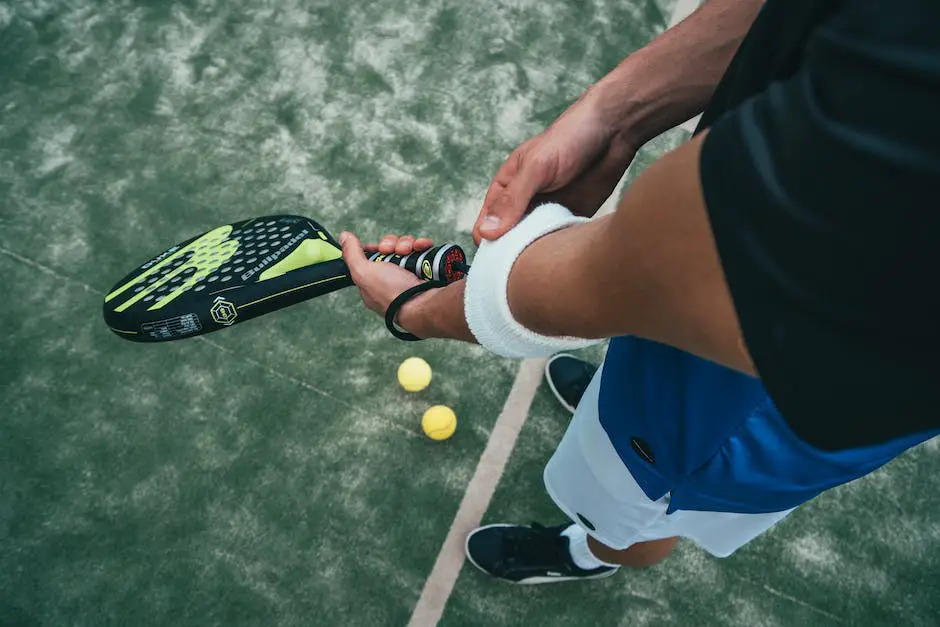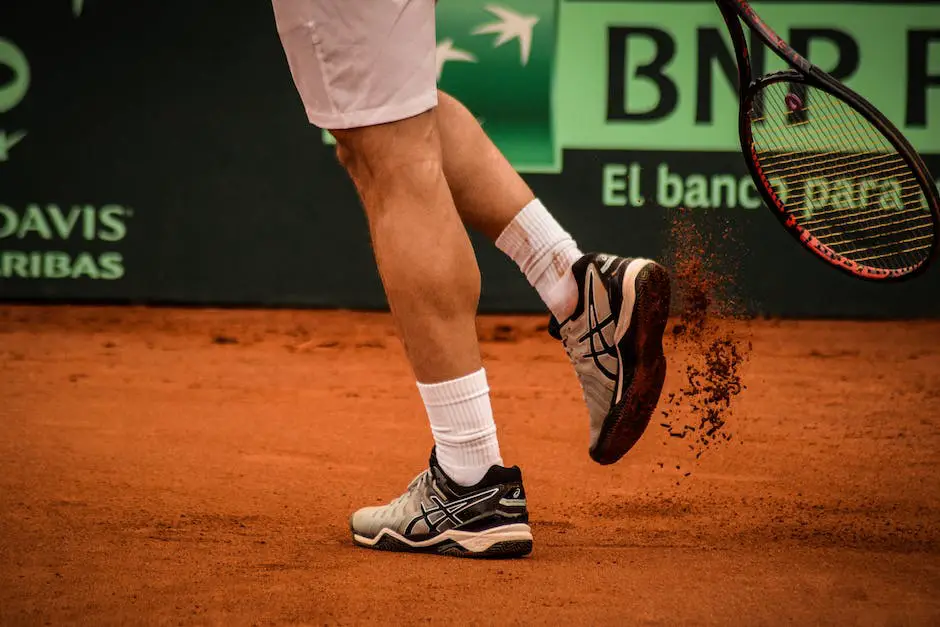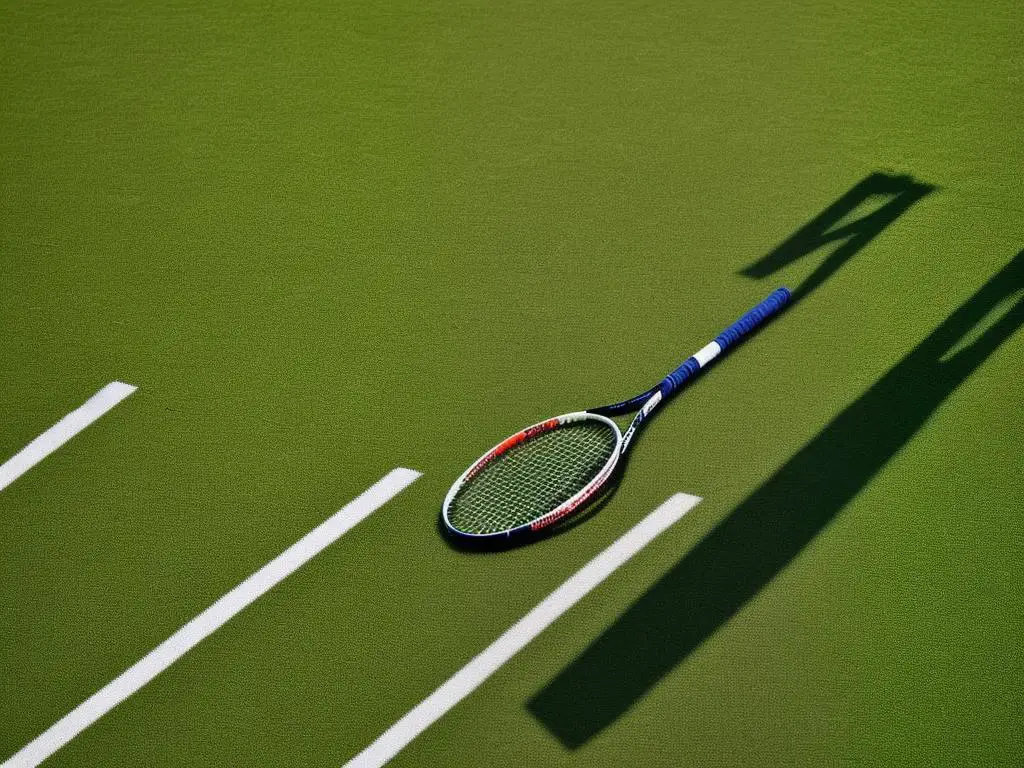Tennis, a game of precision and power, greatly relies on the right kind of equipment, of which the tennis racket is arguably the most crucial. In order to truly unlock your potential in the sport, understanding the components and functionalities of a tennis racket designed especially for your skill level – beginner or professional, is key. These rackets, despite having common components such as head size, weight, balance, and string pattern, are uniquely designed to suit the needs of the respective player. By understanding the specific characteristics that separate a beginner’s tennis racket from a professional’s, you can make an informed decision that will aid your game strategy and ultimately, performance on the court.
Understanding Tennis Racket Components
Understanding Tennis Racket Components: Importance and Variations
A tennis racket is composed of several vital components. It’s not simply a bat with strings attached to it – every aspect from the head size, weight, balance, to the string pattern plays a critical role in determining the racket’s function, and in turn, the player’s performance on the court.
The head size of a racket refers to the area where the strings create a surface for the ball to make contact with. Generally, tennis rackets are available in an array of head sizes, commonly ranging from 85 to 135 square inches. Larger head sizes offer more power and a broader sweet spot – the area that produces the maximum power for the least amount of effort.
On the other hand, the racket’s weight is another key component to consider. Lighter rackets facilitate easy maneuverability and swift swing speed, whereas heavier rackets provide more power and stability but may compromise on agility.
The balance of a racket is determined by the weight distribution across its length. Balance point measurements classify rackets as head-light, evenly balanced, or head-heavy. Head-light rackets are easier to maneuver while providing stability, whereas head-heavy rackets offer more power.
The string pattern on a racket, typically noted in a format like ’16×19′ or ’18×20′, refers to the number of main (vertical) and cross (horizontal) strings. Denser string patterns offer more control, while open patterns provide additional power and spin.
Understanding the Difference Between Beginner and Pro Tennis Rackets
At a glance, all tennis rackets may appear similar; however, upon closer inspection, one can discern a significant difference in the design and specifications of beginner and professional rackets.
Rackets designed for beginners generally possess larger head sizes to widen the sweet spot, making it more straightforward for novices to hit the ball well. These rackets are typically more lightweight, allowing newcomers to maneuver them smoothly without straining their arms. Furthermore, beginner rackets have a head-heavy balance to make up for their reduced weight, ensuring there’s ample power behind each stroke.
Conversely, rackets crafted for professional use usually have a smaller head size. This reflects that skilled players can reliably hit the ball accurately, hence they prioritize control over power. Furthermore, pro rackets are denser, offering superior stability and power, combined with a head-light or perfectly balanced make for improved maneuverability despite the extra weight.
The string patterns of the rackets also vary. Beginner rackets often have a looser string pattern to enhance power and spin, whereas professionals tend to favor a denser string pattern for increased control over their shots.
In a nutshell, where beginner rackets prioritize ease of use and power, pro-level rackets are constructed with an emphasis on control, stability, and precision. The latter is geared towards players capable of generating their power.

Features of a Beginner Tennis Racket
An Overview of Beginner Tennis Racket Features
Tennis rackets designed for beginners have distinguishing attributes to help newcomers to the sport hone their skills. Some of these key characteristics include a notably larger head size, a more lightweight construction, and the often appreciated feature of being pre-strung.
Why a Larger Head Size?
In tennis, a beginner’s racket often has a bigger head size in comparison to pro rackets. The larger head size provides a bigger sweet spot or the optimum spot on the racket to hit the ball. This allows beginners to make better shots even if they don’t hit the ball perfectly. It helps improve their gameplay, enabling them to hit the ball consistently and with more power.
Lighter Weight for Easy Handling
Beginner tennis rackets are usually lightweight, weighing less than 11 ounces. The main advantage of a lighter-weight racket is that it is easier to maneuver, helping beginners maintain control and stability when hitting the ball. With a lighter racket, beginners can also play for a longer period without tiring out their arms. However, it’s worth noting that a lighter racket may not provide as much power as a heavier racket, which is more suitable for experienced players.
Pre-strung Rackets: Ready to Play
Another feature that separates a beginner racket from a pro racket is the pre-strung quality. Beginner rackets often come pre-strung from the manufacturer, which means they are ready-to-play straight out of the box. In contrast, pro-level rackets often come unstrung, allowing players to choose their preferred string type and tension for customized performance.
The Trade-off: Control vs Power
While beginner rackets are designed to offer greater control and ease of use, they may not provide the same level of power and precision that professional rackets do. Pro rackets are often heavier, have a smaller head size, and allow custom stringing, contributing towards better shot control, precision, and power. These qualities, however, demand a higher level of skill to utilize effectively.
In Summary
Beginner tennis rackets are specifically crafted to meet the needs of those who are new to the sport, allowing them to hone their skills effectively. These rackets are characterized by their large head sizes, light weight, and convenient pre-strung feature, which all combine to make for a more forgiving and accessible playing experience. As players become more proficient, they might find that a professional-grade racket, tailored to their unique playing style and preferences, provides a game-enhancing power and precision.

Qualities of a Professional Tennis Racket
Delineating Pro Tennis Racket Features: Emphasizing Power and Control
An exploration of the characteristics that set apart a professional tennis racket involves a comprehensive analysis of the elements that directly influence the course of gameplay. Professional-grade rackets are typically recognized by their smaller head sizes, heavier weights, and top-tier string quality, all of which contribute significantly to the higher levels of control, power, and precision required by professional players.
A Closer Look at the Smaller Head Size
Pro tennis rackets, unlike beginner rackets, usually boast a smaller head size. The head size of such rackets falls within a standard range of 85 to 97 square inches. This shrinkage in size facilitates greater control over the racket and enables more precise ball placement. Given that every contact with the tennis ball is crucial, these rackets are designed to optimize a player’s control over every single hit.
Heavier Weight
A defining characteristic of a professional tennis racket is its weight. Generally, the weight of a pro racket is between 11 to 13 ounces. The additional heft provides power to each swing. Moreover, the weight adds stability to the racket, reducing the chances of twisting in the hand during impact. This feature is crucial for countering powerful shots from the opposing player. The extra weight, however, can be challenging to handle for inexperienced or younger players, hence it being a signature of pro rackets.
Quality Strings
String quality is another crucial element that differentiates a professional tennis racket from a beginner’s one. Pro players usually prefer a denser string pattern – typically 18×20 grids – enabling more control over the ball and lesser power, which pros can adequately generate themselves. In contrast, beginners often use rackets with a more open string pattern, such as 16×19, that provides additional power but less control. Professional players also tend to opt for high-quality natural gut or hybrid strings that offer a balance of power, durability, and control.
Taking a Swing at Control, Power, and Precision
Digging into the features that set professional tennis rackets apart, it becomes clear that it’s about more than just the brand tag. The smaller head size, sturdier weight, and high-quality strings combine to amplify control, power, and precision – three pivotal elements that seasoned players leverage for victorious performances.
Pro players routinely depend on rackets that gift superior control for precision shot-making, facilitated by a reduced head size along with a denser string pattern. Simultaneously, bearing in mind the forcefulness of the shots unleashed by pro players, their rackets carry more weight to withstand and rebound powerful hits effectively, thereby improving stability during play. Additionally, professional-quality tennis strings provide a trifecta of strength, force, and control, which coalesce to enable pros to fully exercise their racket’s capabilities.
Comparatively, rookie players would typically veer towards rackets that are lighter and have larger head sizes, along with more liberal string patterns to offset limitations in strength and technical skill. These features ease the process of contacting the ball and deliver boosted power to supplement strokes.

Choosing the right Tennis Racket for Your Level
Harvesting the Right Tennis Racket: It’s All About Level of Mastery
An Introduction to Beginner Tennis Rackets: Your Ideal Starter Kit
If you’re at the threshold of your tennis journey, consider opting for a racket that promotes easy learning while fostering a steady growth curve. Beginner tennis rackets are usually equipped with larger head sizes, often falling within the 100-110 square inch range. The increased surface area diversifies the ‘sweet spot,’ making it simpler for beginners to connect with the ball.
These beginner-friendly rackets rarely weigh more than 9 to 10 ounces, favouring a lightweight build. The shedded weight eases maneuverability, ensuring a rapid, breezy swing while making the overall playing experience more enjoyable.
Moreover, a large chunk of these beginner rackets come with a hefty beam (that’s the side region of the racket’s head) that injects extra power into shots. Notwithstanding, complete novices may find that an overly powerful racket could be counterproductive, potentially resulting in erratic shots and inconsistent precision.
Professional Tennis Rackets: For Those Seeking Precision and Control
Professional or advanced tennis rackets offer features distinctively different from beginner rackets. They encompass a smaller head size, typically between 95 to 98 square inches. While this might reduce the hitting area, it offers more precision, control, and a better feel of the ball – desirable attributes for seasoned players.
Pro-level tennis rackets are heavier, usually weighing between 11 to 13 ounces. The added weight provides stability, allowing advanced players to effectively counter powerful shots from opponents. It also provides substantial energy to produce aggressive, fast shots without compromising too much on maneuverability.
Generally, pro rackets have a thinner beam. It helps maximize control and offers better feel but at the expense of power. Hence, the player must generate their own power.
Factor in Your Style of Play
Regardless of your play level, your personal style of play should guide your tennis racket choice. For instance, if you like to stand at the baseline and hit powerful shots, go for a racket that provides extra power. However, if you’re a serve-and-volley type of player who likes to rush to the net, you might prefer a lighter racket for quick reflexes and maneuverability.
Final Thoughts
Choosing the correct racket is an art that includes several variables – from understanding the difference between beginner and professional types to considering your style of play. Whether you’re a newcomer to the game or an experienced player, selecting an appropriately tailored racket can greatly enhance your game and overall tennis experience.

Choosing the perfect tennis racket for your level is not a cookie-cutter process, as it should resonate with your unique style of play. Whether you’re starting out in this captivating game or have made it your profession, knowing the difference between beginner and pro rackets can shape your progress. Additionally, being mindful of your racket’s various components will undeniably bare significance in how you navigate the game. With the understanding of your current play level, preferred type of game – control or power, and physical fitness, you can successfully maneuver through the exciting yet intricate world of tennis. In essence, the tennis racket you wield turns into an extension of your physique, embodying your strengths, style, and sporting ambition, elevating your game to newer heights.